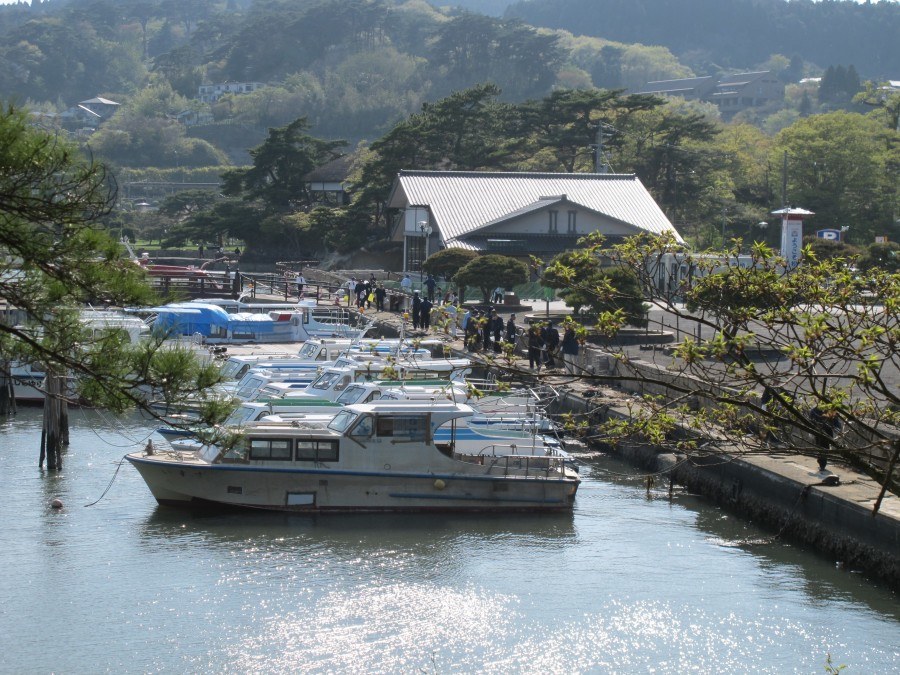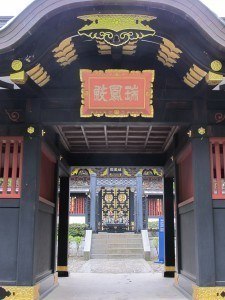Like this post? Help us by sharing it!
InsideJapan Co-Director, Simon King is currently travelling in Japan meeting up with colleagues, suppliers and business partners across the country. His travels included a trip to the Tohoku region which had areas very badly damaged as a result of the earthquake and tsunami on March 11th 2011. Simon was keen to meet with people that InsideJapan Tours had worked with over the last ten years and show InsideJapan’s support for this beautiful region of Japan, as well as survey the situation for himself. Here is what he had to say,
After a couple of nights staying in a really nice ryokan in the heart of Tokyo’s historic district of Asakusa, it was on to Sendai and Matsushima. These are both places I have been before although not for a good few years – the last time I stayed in Sendai was during the 2002 Football World Cup co-leading a group of 29 England fans. It was just me this time but, aware that our ‘Northern Soul’ tour visits this area, I was looking forward to seeing for myself how the city had fared.
Sendai has become synonymous now with pictures of complete devastation from the tsunami, the airport inundated, coastal areas destroyed. However, as was reassuringly apparent on my arrival, this is a big city and the city itself suffered very little damage.
The re-opened Tohoku Shinkansen carried me comfortably and quickly for the 217 mile journey from Tokyo’s Ueno station in a shade over 1 hour and 40 minutes. This is the same line that will soon be boasting bullet trains speeds of up to 260 miles an hours. I digress with train facts (easy to do in Japan). So, en-route I was looking for signs of damage – the only things I could spot were a number of house roofs where tiles had obviously come down and blue tarpaulin sheets were covering the apex. But that really was it.
On arrival at Sendai, the station was nicely full of hustle and bustle, shops busy and lots of people around. The tree lined main street Aoba Dori looked fine with its neat lines only spoilt by the ongoing construction of new subway line – started before the earthquake struck and scheduled to complete on time. Numerous taxis were waiting at the front of the station and the big departments stores Loft and S-Pal were both open.
The exterior of Sendai Station had been damaged and was covered with sheeting – impossible to tell from the inside and therefore clearly cosmetic rather than structural.
Next, by taxi, on to one of our frequently used ryokan, the Tenryu-kaku. Probably Sendai’s oldest ryokan it is located next door to Zuihoden, local hero Masamune Date’s mausoleum. I immediately recognised the very genki owner Yokoyama-san who was pleased to sit down and talk about business and the earthquake. It had certainly been a strong shake in Sendai but she re-iterated that damage in the city centre was very limited and her ryokan was fine. The city museum is open, the old castle remains can still be visited and the handy ‘loople’ bus is still doing its never ending circuit. The devastating damage had been far out of town in the coastal regions – real suffering here but well away from the city. What had also suffered was her business – with cancellations being hard to bear.
After a photograph with Yokoyama-san at the front desk, I headed back to the city and on to Matsushima. I took the JR Senseki line to Hon-Shiogama and the sightseeing boat from here to Matsushima. En-route there were definite signs of the Tsunami – 3 or 4 cars washed up along a river, a boat or two in rather unconventional mooring situations. There were also some mountains of rubbish and tangled steel – the clear up had obviously been a massive job and was now reaching its final stage. But houses and offices generally all looked fine and people were going about their daily lives, hopping on and off the small train, chatting about work and school.
It’s a 10 minute walk from Hon-Shiogama to the port and on the way there was some more damage with a major super market (the appropriately named ‘Max Value’) closed for repairs. The pavement had also clearly seen better days. At the port itself the restaurant complex had suffered but the Italian eatery was open for business and I had a great 500yen pasta lunch (vege version specially requested by awkward me!).
The boat journey was exactly as I remembered all those years ago – though without the football chants and, in fact, with far few people on board. The numerous islands for which the bay is famous had clearly acted as a breakwater and saved Matsushima from the worst of the wave. The islands are indeed beautiful and justifiably one of Japan’s ‘top three sights’.
At Matsushima itself I visited the famous Zuiganji temple and, for the first time, the lovely moss gardens at the neighbouring Entsuin Temple. Both were a delight! The sea facing front at Matsushima had clearly been hit and a number of restaurants were closed – but more than half open and the souvenir shops were doing a pretty good trade.
What was most markedly different on my trip ‘up north’, more so than the few bits of damage that I saw, more than the having to take one alternative train, was the lack of foreign tourists. This was Sunday in Golden Week and not a non-Japanese face to be seen. It is the local people and business affected by this fact that could be the tragedy after the tragedy.
Sendai and Matsushima need and want people to visit and as far as I could see there is every reason still to go.









